I am a bit late to the sad news that Victor J. Banis, a long time writer, who some have called ‘the godfather of modern popular gay fiction’, died on February 22, after finally succumbing to cancer.
I didn’t know Banis personally, but I was very aware of his work. He published his first short story in 1963 in the Swiss gay journal, Der Kreis. He went on to write heterosexual, bisexual and gay erotic and pulp fiction for Brandon House, Greenleaf Press and Sherburne Press.
Of particular note, from 1966 to 1968, he wrote eight pulp fiction titles in his ‘Man From C.A.M.P.’ series, a overtly queer takeoff of the television spy series, Man From UNCLE. The central protagonist of the successful series, was the openly gay undercover agent, Jackie Holmes, who did battle with BUTCH (Brothers United To Crush Homosexuality). The series helped establish that gay audiences were particularly hungry for stories which portrayed characters in a fun and positive light. In doing so, Banis saw himself as playing a consciously activist role.
In all, Banis wrote over 160 books – pulp, porn, queer and straight fiction and non-fiction, under his own name and pseudonyms such as Victor Jay, Don Halliday, Jan Alexander and Lyn Benedict. He wrote everything from romance, to marital guides, to installments of the Mack Bolan Executioner series.
Iain MacIntyre and I had negotiated with Victor to run a piece of his in Sticking It to the Man: Revolution and Counter Culture in Pulp and Popular Fiction, 1950-1980, our upcoming sequel to Girl Gangs Biker Boys and Real Cool Cats” Pulp Fiction and Youth Culture, 1950-1980, but unfortunately it was one of a number of pieces that had to be pulled due to space constraints.
Anyway, I thought it would be a fitting tribute to Banis’s pioneering role as a gay pulp author, to run the piece in full here. In it Banis discusses how the repression that followed the publication of his debut novel The Affairs of Gloria by Brandon House in 1963 led the writer into a boundary-pushing career. It is a timely reminder of what a powerful force mid-century censorship was, and the largely unsung role that pulp fiction played in pushing against it in America, and the risks that its editors, publishers and authors like Banis took.
I was a ‘paperback virgin’ when first I met Earl Kemp. Well, almost, anyway, which I have always thought ought to count in those matters.
My actual deflowering, however, happened as a part of my experience with Brandon House Books, Milton Luros’ operation out there in North Hollywood. What brought me to that momentous event — the foreplay, if you will — was a visit to a paperback bookstore in Hollywood.
This was 1963. The fuse was already burning for that paperback explosion that was soon to happen, but this was a bit before the big bang. In 1963 even the idea of a ‘paperback bookstore’ was still new. I was fascinated. There was nothing to speak of in the way of gay material — up to this point, gay publishing was truly a sometimes thing. A very seldom sometimes thing, truth to tell, which did bother me.
But there were lesbian books aplenty. Yes, all right, faux lesbians, as a friend of mine likes to put it, which is to say, lesbians written by and for men and having not much resemblance to real lesbians living or dead. Still, I thought that I was as qualified as any of those writers. After all, I actually did know some lesbians, so I was practically an expert. What’s more, when I glanced through some of these fictional gems I found myself thinking, “You know, I could do this.”
I took home eight or ten books, randomly selected, read them, and sat down to write my own. I meant it to be a spoof, but not too obvious in its spoofery. No sense in biting the editorial hand that might possibly get around to feeding me.
I sent my manuscript off to the publisher who seemed to offer the most variety – Milt’s company as it turned out, but I didn’t know that at the time. In short order I had a letter from a Brandon House editor (I’m afraid the name has faded from a memory that never was as good as it used to be) who told me he liked my offering (oh, be still my writer’s heart!) but it was too short for their purposes. Would I be interested in making it longer, in which case he thought they might buy it.
I would and I did, and they did, and in a few months I had in my hands copies of my first paperback novel, The Affairs of Gloria (1963), the uninhibited story of a free-loving, free-wheeling nympho, by Victor Jay. Or, as my sister retitled it, Dolly Do Good In The Boudoir.
Fair enough. My Gloria was a good sort, and I thought the cover plenty stylish. I cashed the check I had received and sat by the phone to await the call from the Pulitzer people.
Alas, the call, when it came, was from an employee at Brandon house, one Mel Friedman, who called to tell me that we had been indicted, and were invited to meet at the federal building the following day for arraignment.
Indicted? Invited? Arraignment? I was a virgin, remember? After a lengthy pause during which I considered a number of puzzling questions, I asked the one I thought most pertinent: “Indicted for what?”
A sigh, as if I ought to know already. Obscenity charges, was the answer. Federal obscenity charges. Conspiracy to distribute obscene material.
Of course, virginity did not equate with utter ignorance. I had certainly seen pornography in one form or another. Sex movies weren’t then, as they are now, available at your neighborhood emporium, but even in those days you could find stag movies if you knew somebody who knew somebody. There were little mimeographed stories that circulated endlessly, and 8-page comic books in which grotesque versions of Popeye and Greta Garbo cavorted shamelessly.
But what had any of that to do with my Gloria? True, Gloria had a penchant for, yes, ‘manhood.’ Certainly she was in and out of bed often — all right, quite often — and some of that bedtime was spent with women as well as with men. But there was no shortage of books available at the time with plenty of sex in them, implied sex certainly. The habitués of Peyton Place did not spend their time quilting and dancing polkas.
Looking back, I can see that what I was really guilty of was criminal innocence. I hadn’t a clue. In my defense, I might point out that I had not bought those initial paperbacks from ‘under the counter’; no plain brown wrappers, no hasty swaps in darkened doorways. I had walked into a store in broad daylight, had taken them directly from the racks on the walls, and forked over my money. How could I have guessed that forking so openly might involve anything illegal?
Certainly, aside from the sparkling prose, there was nothing in Gloria that couldn’t be found in her neighbors on the rack. The strongest words in the book were one ‘damn’ and a ‘to hell with it’. Unlike some of her crasser cousins, Gloria did not even have tits, she had melons. As for any other anatomical issues, she might as well have had a feather duster down there for all the details I provided — I only made it clear that it tickled many people.
Anyway, this was The US of A, wasn’t it, liberty and justice for all, home of the free….
It soon began to look, however, as if I might not remain one of the free. I went as ‘invited’ for my arraignment and met for the first time my fellow ‘conspirators.’ Chief among them was, I learned, Milt Luros, owner of the publishing company. His wife and co-owner, Bea, had been invited to the shindig as well. There was Mel Friedman, whose job never was clear to me. Stanley Sohler, Harold Straubing, and Paul Wisner turned out to be editors. Bernie Abramson headed their shipping department and Elmer Batters was a photographer. To round out the party there were two other freelance writers beside myself, Sam Merwin and Richard Geis.
Luros, Merwin, and Geis were a bit spacey because all of them came from a common background of science fiction, you know, that crazy Buck Rogers stuff. I was to learn later that William Hamling and Earl Kemp of Greenleaf Classics shared the same thing with them.
What was involved in Sioux City wasn’t science fiction, but was a handful of books and magazines – nudist magazines, but mind you not the split beavers to be found in today’s Playboy or Penthouse. Rather more of the Sunshine and Health [a nudist magazine] sort of thing, people in the all-together playing badminton or hiking through the bushes, with here and there a bare tush or the rare appendage flopping about. I suppose someone might have gotten excited by them, but I know people who get hot and bothered reading cookbooks.
There was an assortment of charges, involving writing, photographing, publishing, selling, and distributing these publications. The others were involved in numerous individual charges, plus the blanket conspiracy charge, but I was named only in the conspiracy. I felt sort of like an afterthought, but that p.s. loomed rather large in my potential future.
We were brought before the judge. Knees knocking, voice cracking, I pleaded not guilty. As we were leaving, fellow writer Geis whispered to me, “Gee, you acted really scared in there.”
Breaking news, Dick: that was no act. I was scared.
And furious. It was on this momentous occasion that I met U.S. Postal Inspector, Donald Schoof who, it turned out, was the chief architect of our criminal case. And who, as I was leaving the courtroom, took me aside and whispered in what I presume was meant to be a seductive tone that he could make things easier for me if I was willing to testify for the government.
I must emphasize here that I was no outlaw, no career criminal, but up till now a law abiding, flag waving believer in the US of A who had ever been willing, eager even, to cooperate with the government.
My only prior legal infringements had been a speeding ticket and a distressing incident in which an unhappy wife named me as co-respondent in a divorce trial. Today that would be one of the tamer programs on Oprah, but it was pretty racy stuff for Dayton, Ohio in 1956. I don’t have the words to describe the pregnant pause that followed when the judge, a no-nonsense Midwestern burgher, looked up over his glasses and asked, “Is the other woman in the courtroom?”
But while that was guaranteed to get you laughed at it involved no threat of mixed doubles in the big house.
These charges carried penalties of ten years in federal prison or ten thousand dollars in fines. Or both, if you cleaned your plate.
I scorned Mister Schoof’s advances. To be honest, had someone taken the trouble to romance me beforehand (candlelight and soft music are givens in this scenario) I would probably in the afterglow of consummation have blabbed everything I knew about Milt Luros – which, of course, was absolutely nothing. I had never heard of the man before our arraignment. But surely that fact must have come up in their alleged investigation, hadn’t it?
This was after the fact, however. Like the old saying, once the horse is stolen it’s too late to get out the Vaseline, or something to that effect. I was indignant, and kiss me where he might, Mister Schoof was not going to have me on his mattress willingly.
Moreover, I still felt certain that one had only to read The Affairs of Gloria to realize that a mistake had been made. I was in serious denial. Despite the arraignment, despite Mister Schoof’s overtures, despite all evidence to the contrary, I continued to believe that this would all just go away.
It didn’t, of course. It began to look as if it might be me who was going away. Our trial began in October 1965 in Sioux City, Iowa. The very location was a joke (neither Gloria nor I would ever have set foot in Sioux City voluntarily) but federal law allowed charges to be brought where the material was shipped, where it was received, where it was most expensive and punitive to defend, or anywhere in between. The idea was that it would be easier to get convictions in Sioux City than Los Angeles, but the sad reality was, none of these books or magazines had ever been seen in Sioux City; or if they had, they really would have been sold ‘under the counter.’ No overt forking in the Corn Belt.
I can’t say the experience wasn’t interesting. For one thing, though they may not always be the nicest individuals, book people are almost invariably interesting. It is not a business that attracts dunces as, say, postal inspection might. Under other circumstances, I would have enjoyed spending time with these people, or some of them anyway.
I have said at every opportunity that I liked and admired Milton Luros from the very beginning. A graduate of New York’s prestigious Hunter College, Milt went on to become quite an artist and painted covers for science fiction magazines for over a dozen years. After he moved to Los Angeles and started his business there, he had set out to print high quality art books, a line he soon discovered was not particularly profitable, and in short order he found his niche printing sexy stuff — for others, initially, but eventually for himself. His field of business notwithstanding — and I could see how some might not approve of that, though it did seem to me as if one had the option of simply ignoring it — Milt was a polite, soft-spoken gentleman of the old school.
I liked Bea Luros too, but I have to say in all honesty, she was as loud and crude as Milt was polished. Lunch at the same table with Bea meant that her fork was in everyone’s plate, just in case you may have gotten something better than she had. And while she was eating yours and hers, she was talking in a shout. Subtle was not her style. Still, she was good-natured, and took a Jewish Mama’s interest in everyone’s personal woes. Plus — and this has always counted with me — she could be very funny. I think she liked me because I was the one who always laughed at her stories.
I didn’t spend much time with the editors, though Stanley Sohler took the opportunity to extol the virtues of acid to me; I nodded my head and demurred in a whisper. I don’t think I really knew what he was talking about except in the vaguest of terms. Sam Merwin sometimes wanted a listener while he drank his Scotch and bemoaned his marital and sexual problems. (Honestly, Sam, what kind of fun did you think I was having in the gay metropolitan area?) And Dick Geis and I swapped writing ideas.
Without a doubt, however, the most fascinating member of our cast was Stanley Fleishman, Milt’s longstanding attorney. At the time, Fleishman was probably the country’s leading First Amendment attorney. He was also one of the profession’s most colorful.
Having survived polio as a child, Stanley was left with twisted and nearly useless legs and would walk all his life with a pair of crutches. He was not above using those crutches as weapons in a courtroom duel either. He would find himself so outraged, so stunned, by a question posed by a prosecuting attorney that he would leap to his feet, forgetting those shrivelled limbs. While the entire assemblage watched, holding their breaths, Stanley tilted, swayed, seemed about to fall to the floor until, at the last possible second, he remembered to seize a crutch. By the time this dramatic interlude was over, the prosecutor’s remark had lost its effectiveness, if it was remembered at all.
Milt had hired a second attorney too, specifically to represent the freelancers among us, the legendary Texas criminal lawyer, Percy Foreman, who would go on in time to represent Jack Ruby, but was already known as a modern day Clarence Darrow for his success in seemingly hopeless murder cases. In reality, Fleishman and Foreman were working on an Abbot and Costello routine that they would perfect by the time William Hamling, et al [of Greenleaf Publishing] were brought to trial [in a separate landmark censorship case that eventually established First Amendment rights for Adult publications] in Houston, Percy’s home court, in 1966.
Foreman was a tall, folksy looking man with a drawl and a mop of white hair hanging in his face. Foreman had not heretofore worked an obscenity trial, but explained that he had taken this one because he wanted the privilege of working with Fleishman. He was scarcely any less dramatic himself.
There were rumors, by the by, that Foreman drank. I can’t say absolutely, I never saw the bottle at his lips, but his breath was often one hundred proof. One whiff and the spaghetti stains disappeared from your suit. Well, it was important that we keep up appearances, so I counted that a plus.
Then there was the other side. I’ve said already that it was Donald Schoof’s aversion to Manhood and Melons that brought us to this cornfield of honor. But while old M & M’s was pulling the strings, he of course had the assistance of a prosecuting attorney, whose name I can no longer recall. My only clear memory of him was my impression that if someone had shown him two photographs and asked him to say which represented a hole in the ground, I honestly doubt that he could have come up with the answer. But, hey, I don’t want to knock these guys. Seriously.
Still, with ten years hanging over my head, I didn’t feel much inclined to laugh. I was young, blond, and though I lacked Gloria‘s melons, my own feather duster was not without its charm. Those ten years were not likely to be a house party for me.
I was even less inclined to laughter as I listened to government witnesses testify falsely regarding meetings I had attended at Brandon House, phone conversations, letters, etc. None of it true. Until that call from Mel Friedman, my only contact with anyone from the publishing house was that letter from the nameless editor, and he wasn’t one of my co-defendants.
In Al Capp’s brilliant comic strip, Li’l Abner, Abner’s own favorite comic strip character, Detective Fearless Fosdick (the only instance I know of a comic strip within a comic strip) is tortured in a particularly vile way-tied to a chair and forced to listen over and over to Nelson Eddy’s recording of ‘Mammy’s Little Baby Loves Shortenin’ Bread.’
One has to suppose that these witnesses had been subjected to something equally heinous (say, the Von Trapp Family Singers and ‘It’s a Small, Small World,’ from Disneyland) to get them to perjure themselves so blatantly.
Had the jurors even looked at the material they were to judge? Certainly they did not in the courtroom. I watched them pass the nudie magazines, for instance, from one to another, gingerly holding them between thumb and forefinger without opening them and with their eyes turned solemnly heavenward. Though I had no connection with those magazines (heck, I hadn’t even seen some of them myself) the charge against me was a conspiracy charge. A find that the magazines were obscene could send me up the river with only a feather duster for a paddle.
An employee of the motel at which we were staying told me our rooms had been bugged. My mail at home was left at the doorstep outside of the envelopes, so I could understand that it had been read.
So much for justice and the American way. The foreplay was over. The federal government and Mister Schoof, had me on the bed, and they weren’t going to let me up until they had their vile ways with me. I was abused and misused for four months.
Four very long months, I might say. I don’t suppose any of our group found Sioux City very exciting, but for a young gay man it was a case of, “no one to walk with, no one to talk with….” The others were already acquainted with one another, and most of them had been through some version of this problem before. I was the rookie, I was younger than the others, and I was gay. Mostly, I was alone, though I have to say that Bea Luros took my homosexuality in stride. To be honest, she seemed altogether fascinated by it. She stopped short of asking what my partner and I did in the sack, but only just short of it. Whether she was just being kind, or nosy, or salacious, I can’t say, but it was a lifesaver to have someone I could talk to without seeing them back away, and I was grateful. In return, I let her pick whatever scraps she wanted from my lunch plate. Fair is fair.
Except for those chats and food swaps with her, however, there wasn’t much to help the time pass. With the eyes of the community upon us (and that meant the eyes of the jurors) I certainly wouldn’t have been out cruising and carousing, even had there been any gay hangouts in Sioux City, and so far as I know, there weren’t.
It was days of overheated, stuffy air in the courtroom, with numerous pairs of disapproving eyes watching every shift of our bottoms in our chairs. And nights of watching television alone in a motel room, with the occasional drink in the motel’s lounge where we were more or less entertained by a touring pop group whose girl singer had a limited repertoire and even less talent. To this date the sound track in my nightmares consists mostly of ‘Downtown’ sung over and over in a nasal twang. Where is Petula Clark when you need her?
In the end the forces of law and order did let me go, if reluctantly. I was acquitted but only on a technicality, when the conspiracy charge, the only one in which I was named, was tossed by the judge at the end of the trial. The other defendants were convicted, though those convictions were eventually overturned on appeal.
“Was justice served?” I wondered aloud.
“Justice was served,” Dick Geis replied, “She was served her head on a platter.”
The sad result of all this was that my innocence was gone forever. I had been screwed in no uncertain terms and like any abused virgin I felt sore and violated. I came home from Sioux City with a burning resentment for the callous disregard that the government had displayed for what I considered some pretty fundamental rights I thought guaranteed by our constitution. There’s a reason that the founding fathers put freedom of speech right there in the very first amendment; without that, the rest doesn’t amount to a hill of beans, does it?
And it had all been for naught, as I saw it. It can be a mistake attempting to explain the thought processes of others, but one would have to suppose that in part, at least, the governmental individuals involved in indicting me must have assumed that they could discourage me from any further activity in the paperback business. Ironically, the result was exactly the opposite.
Under other circumstances, I’m not sure that I would have had much interest in pursuing a paperback writing career; The Affairs of Gloria had been fun but a whim, really. Certainly I had no interest in a career writing of faux lesbians.
I was still hurting, however, and I felt practically compelled to write at least one or two more books, to show the Federales (and myself) that I had not been intimidated. Well, if I am going to be entirely honest, I have to mention that I quickly discovered that the books were easy to do, for me at any rate. And they paid money. I soon found that I could write them with astonishing speed, easily a book a week. At $700 a pop, that was really good money in 1966 dollars.
The only problem was I had decided I wanted to write gay books and if lesbians incited government censors to action, writing about gay males doing the deed was like waving red panties in front of a horny bull. The postal authorities and the courts, all the way up to the Supreme Court, had already proclaimed that sort of dalliance a no-no. Two men holding hands were enough to render a book obscene, as these folks saw it. Holding anything else was blasphemy, at the very least.
Not even out of respect for our common travail would Milt Luros venture into those waters, nor was I able to generate any interest among the other paperback publishers of the day. By now they all knew who I was. Paperback publishing in those days was a small town and I had paid my dues by taking my lumps along with Luros and company. Everyone was eager to see something from me in the heterosexual or lesbian vein, but even the bravest of them were convinced gay books would be like dropping their pants with little hope of satisfaction. “But who would buy them?” was the standard reply that I got to my queries. Well, as everyone knows, when a guy gets really hot for something he isn’t usually much inclined to be discouraged. I remained stubbornly convinced that there was a large and largely untapped market for gay books. The Stonewall Uprising wouldn’t happen until 1969 but already by 1965 gays were coming out of their closets.
In 1950 William Jennings, often called the “gay Rosa Parks,” was arrested on a sex charge in Los Angeles’ Griffith Park. The usual response to this sort of arrest was to roll over and pay your fine, but Jennings refused and demanded a jury trial. He pleaded innocent and to everyone’s surprise the jury agreed. It was the first time in California that a jury had ever acquitted an openly gay man on an indecent behavior charge, and it was looked upon as a deliberate slap at the police entrapment policy of the era.
In 1951 in San Francisco, Jennings and Harry Hay formed the Mattachine Society, the first American gay rights group. In 1953 W. Dorr Legg started One, Inc., and began publishing One, the first American gay review. In 1955, Phyllis Lyon and Del Martin founded The Daughters of Bilitis, the first ever-lesbian rights organization.
It has to be mentioned that all of these groups became objects of scrutiny and harassment on the part of the legal authorities, especially the FBI and, of course, our old friends at the Post Office, who refused to mail the October 1954 issue of One on obscenity grounds, solely because it dared to discuss homosexuality in a favorable light.
A 1955 issue of the Mattachine Review mentioned homosexuals in “key positions” in the FBI hierarchy. The Review was careful not to name FBI director J. Edgar Hoover nor his companion Clyde Tolson, but those two took the hints personally as fighting words, and repeatedly charged that all three rights organizations were communist fronts.
In 1962 a group of San Francisco bar owners, gay and straight, formed the Tavern Guild to resist the practice of police payoffs and to consolidate their legal and financial clout. 1964 saw the formation of The Council of Churches, again in San Francisco. Their first fundraiser, a New Year’s Eve drag ball, was raided and a number of prominent religious leaders jailed. The result was the first public demonstration for gay rights, long before the happening at Stonewall.
The history of the gay revolution needs a lot more than five short paragraphs, of course, but the point is, by 1965, gays were no longer cowering in the shadows as they had for decades. They were dancing together in bars and clubs, initially in private clubs but before long in public ones as well. The scene was jumping. The love that dared not speak its name was telling it to all who would listen, including a few who didn’t want to hear it. Which is probably why God invented earplugs, Donald. Butt plugs are another matter, but this isn’t the place to get into that.
Encouraged by this new gay spirit, and despite the advice to the contrary, I wrote my gay novel The Why Not (1966) with my own byline on it. Like the baby Moses, I put it adrift on the publishing waters, and who should save my offspring from the river of forgetfulness but the Prince of Bull-Rushes himself: Earl Kemp. And Prince that he was, Earl didn’t even quibble over the state of my virginity; anyway, on the gay front, everything I had to offer was still unsullied. Well, yes, I do mean on the gay publishing front, but the point is, I was a ‘gay paperback virgin,’ which was what I started out to tell you originally.
I don’t know what kind of advice Earl got to the contrary, or what kind of heat he may have taken for his decision. He’s never said. What I do know is that he had sufficient vision to see the gay explosion just down the road. He bought The Why Not for Greenleaf Classics.
I was curious so I asked Earl if he could remember the book. His reply (email, October 2002) really made my day. He wrote:
There were many thousands of paperback novels published under my direction at Greenleaf Classics, and 99 percent of them all started out as original manuscripts. There was a point in time when we were almost inundated with unsolicited submissions by wannabe writers, the proverbial ‘slush pile.’ We also had a very good First Reader named Bill Moore. It was his job to wade through all those novice manuscripts looking for passable material. His word was the first absolute final word in the whole editorial department.
From those approximate 4,000 paperback titles that we published I can remember around four manuscripts only of truly significant worth, both as literature and as a viable portrayal of our liberated times. These are manuscripts that almost from the minute they arrived at the office began making ripples of excitement that flowed instantaneously from editor to editor.
Such a day happened when Bill opened the package containing the manuscript for The Why Not. He barely even began his customary quick-eye scan-and-quicker-rejection routine when something grabbed him and he stopped reading. When he realized that he didn’t need to read the manuscript, he brought it directly into my office… the first time he had ever done any such thing. (Actually, office protocol dictated that he follow procedure and pass anything to me through the editor in chief.
“I think you need to look at this manuscript yourself,” he told me.
And I did, and I agreed with Bill and I also recognized it as something remarkable, timely, and apt to be rather popular. I bought that manuscript right then without even reading it all the way through and I’ve never regretted that decision for a moment.
I feel it was a pivotal book that opened doors too-long closed and one of the major building blocks in Greenleaf’s ongoing fight for First Amendment realities.
I won’t pretend that this was a great novel, but it did get astonishingly good reviews, one in Publishers’ Weekly, and that truly was astonishing, since they were mostly disinclined to review gay paperback novels at all, and sold well enough that Earl was amenable to more of the same. As an aside, it’s worth mentioning that this book, which sold for seventy-five cents back then, is now offered for sale on the Internet for $175. A pretty good rate of inflation, one would have to say.
The best was yet to come. I proposed to Earl a spy spoof, in the manner of The Man From Uncle, then playing on television. The Man From CAMP by Don Holliday. He published it through Leisure Books in 1966 — and caused a sensation.
The Man From CAMP was Jackie Holmes, who tweaked every cliché then in existence regarding homosexuals. Yes, he was blond, pretty, and effeminate. He was also tough as nails and could outfight, outshoot, and outrun the best of them. He looked very pretty in a dress, too. His white poodle, Sophie, had razor sharp teeth and was trained to kill. Best of all, so far as I know, Jackie was the first homosexual protagonist in fiction to be openly gay and proud of it. In a sense, gay pride could be said to have started with Jackie Holmes. Jackie cemented as well the partnership between Earl Kemp and myself, and a friendship that would last until the present day. It is doubly ironic, I think, that my Sioux City trial resulted in bringing together in unholy wedlock a southern boy who couldn’t say “fuck” without blushing and a Midwestern prude who was 30 before I could bring myself to say “damn” aloud.
An unlikely pair of pornographers, one would think. In that vein, however, it’s worth mentioning that before he left Ohio for the bright lights of LA and success as a porn star, superstud John Holmes (no relation) was known mostly for his record of perfect attendance at Sunday School 12 straight years without a miss. Hmm. Different bed, different head, I suppose one would say.
Jackie never made it to Sunday School, at least not in the pages of any of the books, but he had his own sort of stardom. The gay world took to their new superhero with a passion, and so launched the gay paperback revolution that would change the publishing, and social, landscape of the sixties and seventies.
I considered that a good trade for my maidenhead.
Oh, hell, if you want to know, I had never put much value on that anyway!
This piece originally appeared in eI, Volume 2.1, 2003.
The photo of Milton Luros is courtesy of David Saunders and his website, www.pulpartists.com

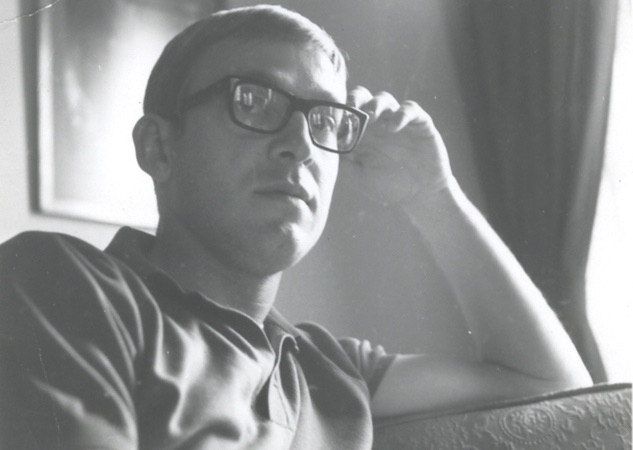
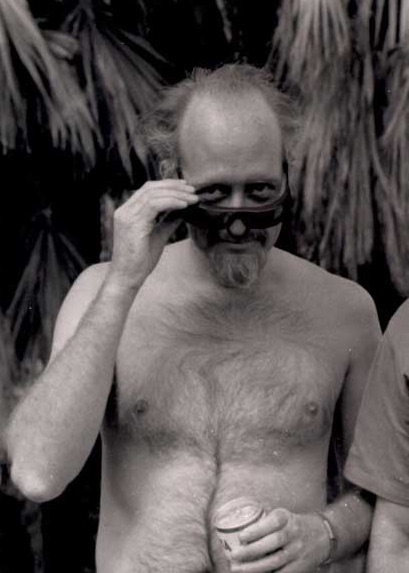
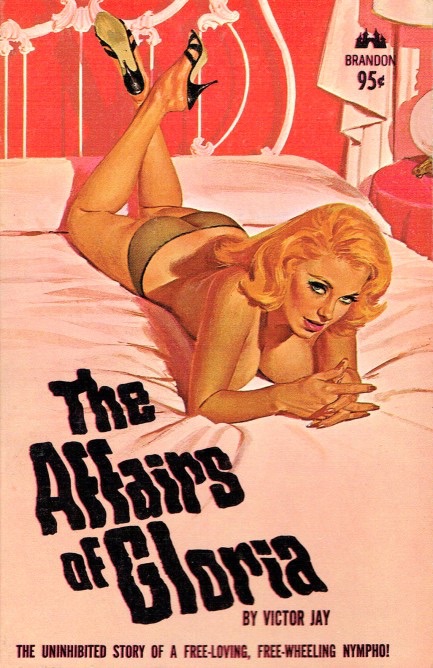
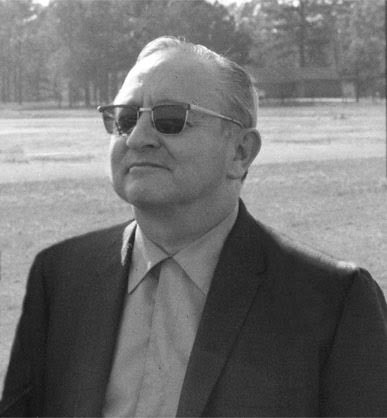
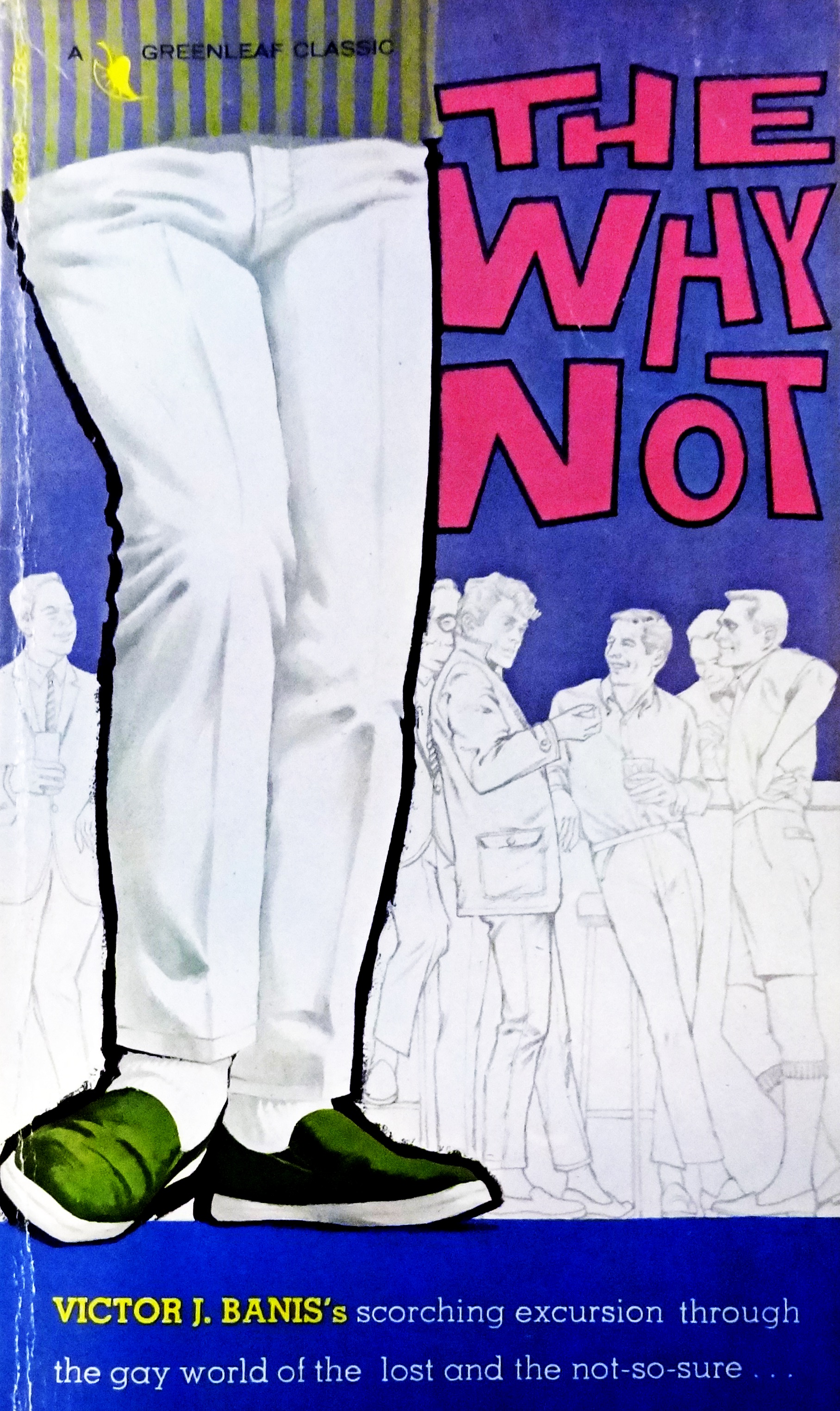
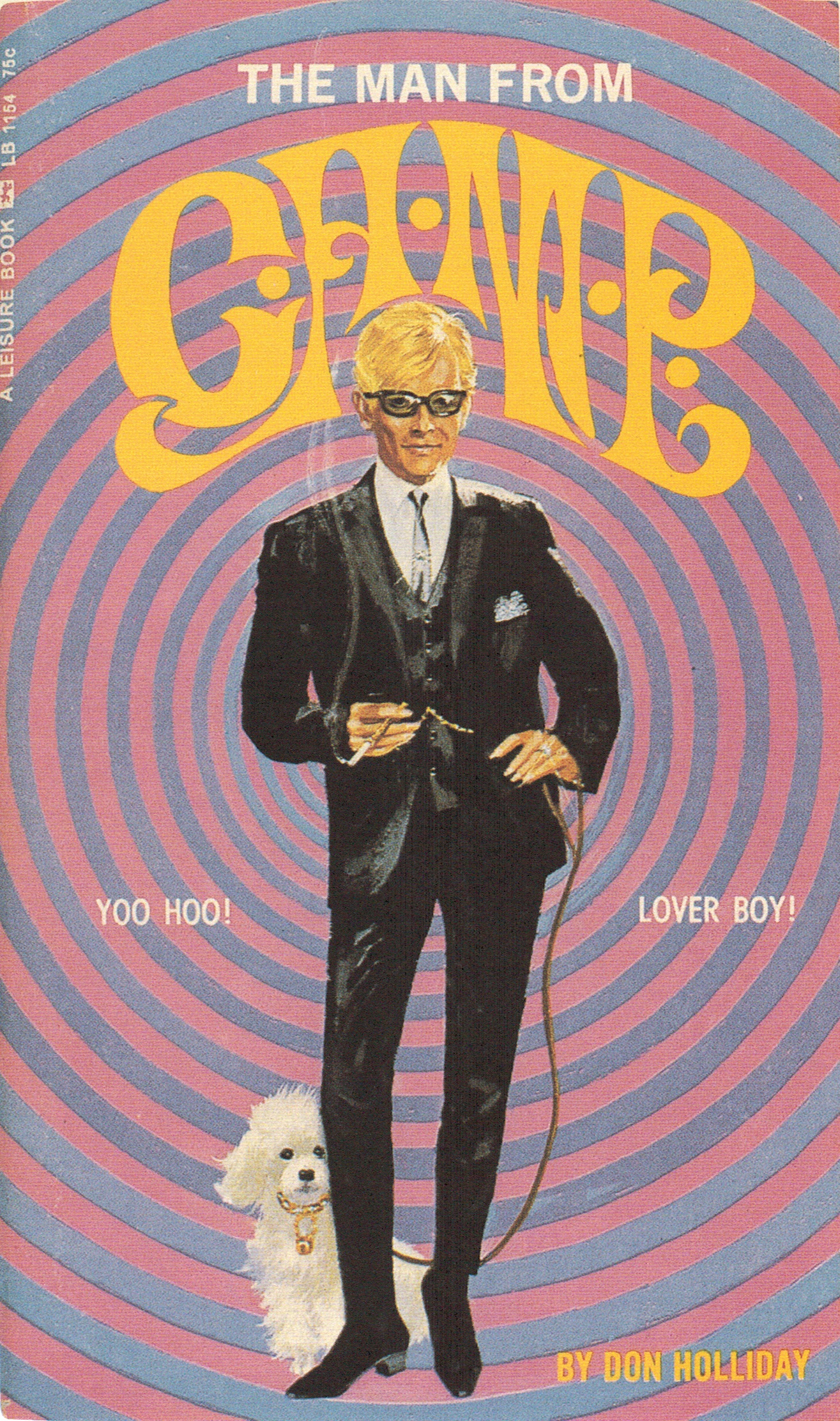



















Pingback: Role Taking Part In In The Bed Room - AT
Pingback: My Husband Had A One Night Time Stand – Best Furniture Showroom in Trichy Tamilnadu India